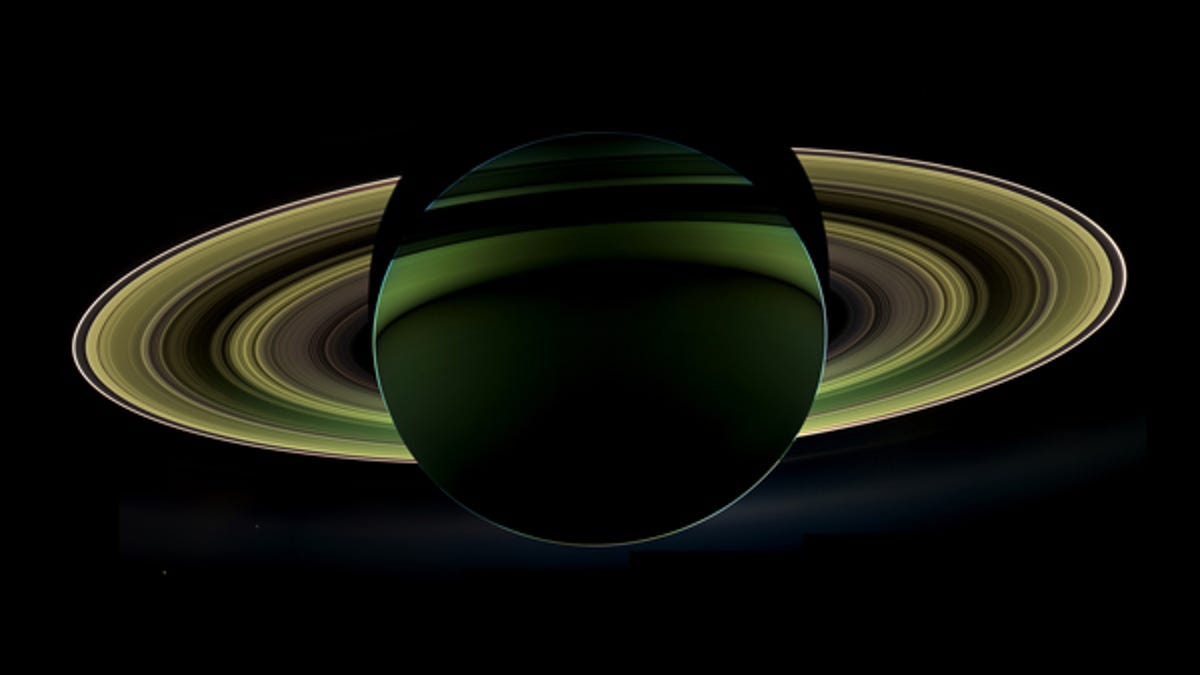Stunning rare photo of Saturn back-lit by the sun
A new, rare photo of Saturn has come in from NASA's Cassini spacecraft, showing the planet and its rings back-lit by the sun.

"A Splendour Seldom Seen".
(Credit: NASA/JPL-Caltech/SSI)
A new, rare photo of Saturn has come in from NASA's Cassini spacecraft, showing the planet and its rings back-lit by the sun.
Launched in 1997, and arriving in Saturn's orbit in July 2004, robotic spacecraft Cassini has only sent back one other picture of the ringed planet of this kind in the eight years it has been on the mission to study Saturn and its moons.
The above photo, "A Splendour Seldom Seen", was snapped on 17 October 2012 after Cassini was deliberately positioned in Saturn's shadow to take images of its dark side, facing towards the sun, a position known as high solar phase. This was so that scientists could study the ring and atmosphere phenomena not usually seen in the low solar phase.
The first photo of Saturn in the high solar phase was snapped in 2006. Called "The Pale Blue Dot", it shows Earth putting in a cheeky appearance in between Saturn's brighter inner rings and weaker outer rings.
The new photo does not show the Earth — we are hidden away between Saturn and the sun — but two of Saturn's moons, Enceladus and Tethys, can be seen to the left.
The captain's log on Cassini Imaging Central Laboratory for Operations (CICLOPS) says:
Images taken, using infrared, red and violet spectral filters, were combined to create this enhanced-colour view. The images were obtained with the Cassini spacecraft wide-angle camera on October 17, 2012, at a distance of approximately 500,000 miles (800,000 kilometrer) from Saturn. Image scale at Saturn is about 30 miles per pixel (50 kilometres per pixel).
You can find both images in high resolution on the Cassini Imaging Central Laboratory for Operations (CICLOPS) web page here.

